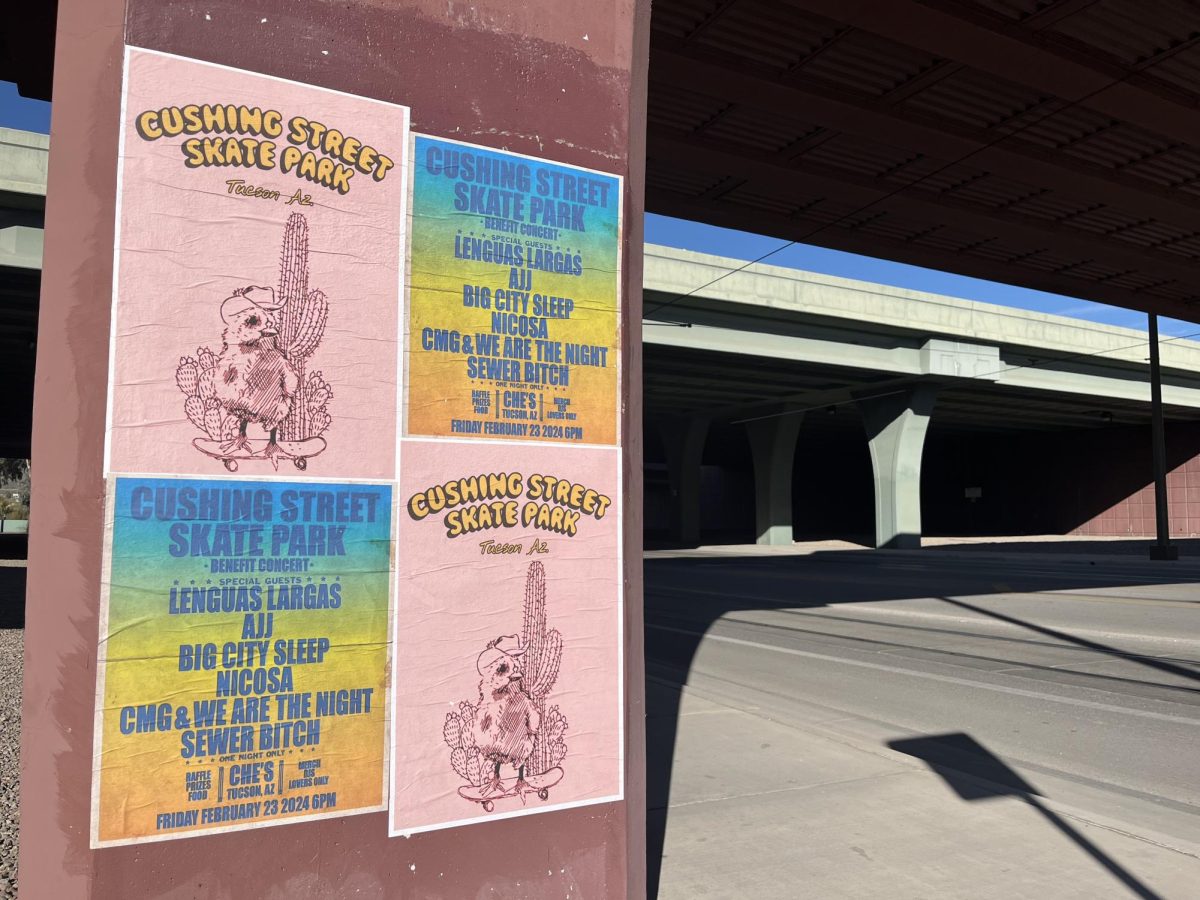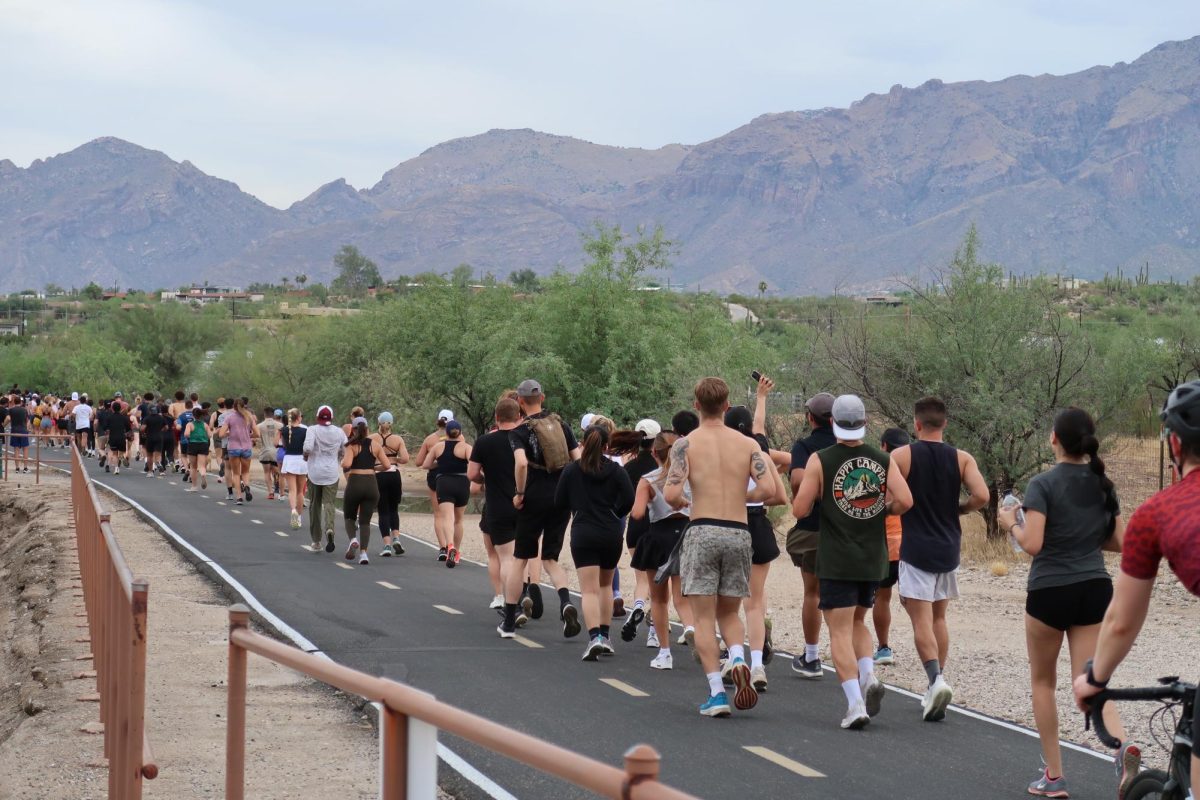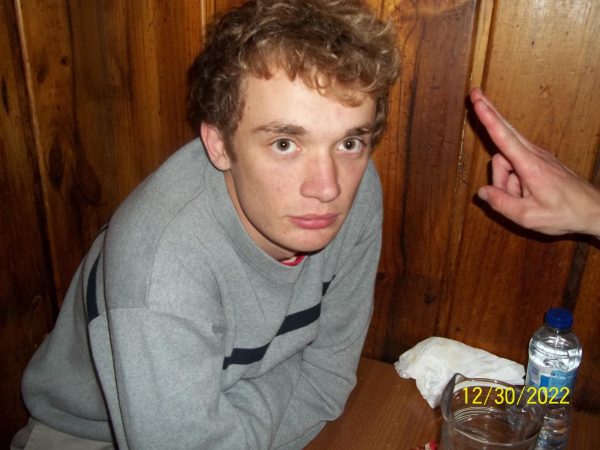Jackson R. Kimball, Arizona Sonoran News
In 2016, shaded beneath the busy rumblings of the I-10 overpass; down along the borderline of the Tucson’s western chunk, Caleb Gutierrez had an idea.
Nestled between the slowly swelling city center and the now bustling barrios perched on the foot of A-Mountain, there is a small empty plaza: A perfect spot for a skatepark.
Eight years after Gutierrez and his friend Kyle Arnishi proposed constructing a new skatepark beneath the Cushing Street underpass, the Cushing Street Skate Park will begin the first phase of construction in September, according to Officials from the City of Tucson’s Ward 1.
“They let us know at our last meeting that the park is fully funded and that phase one will break ground in September of this year,” said Gutierrez, 33.
The much anticipated park project has been a recurring piece of Tucson city gossip since its inception and has received all kinds of community outreach, crowdsourcing, funding and fanfare from numerous local venders, co-op members and city subordinates.

“The first two years after we went to the city, it was definitely just rolling. Everyone’s attention was on us; the news, going to city meetings. We became a nonprofit because it was such a large project,” said Gutierrez.
The project was quickly approved by the city after it was first proposed in 2016. and in the first year afterwards, the Tucson skateboarding community began raising money and awareness for the potential park. The project also received support from a variety of other local facilities including the Tucson Museum of Contemporary Art, which helped design the park, and a sponsorship from the Parks and Rec Department.
“Now the project is up to like $1.5 million in required funding, but eight or nine years ago, it was like $800,000 or $900,000, which is still a lot of money,” Gutierrez said. “I thought, ‘How am I gonna raise this money?’”
Gutierrez said that after a couple years of sufficient community support and fundraising, things began to lose steam.
“I got kind of burnt out and everyone was like, ‘What’s going on?’ and we were trying to do these little events like skate nights at the park where we were raising a really small amount of money,” he said. “It was great to keep the awareness, but over the years everyone just wasn’t as engaged as much.”
Gutierrez said that he and the community felt that the city wasn’t as interested in following through with the project once a couple of years had elapsed.
“The city was transforming with new developments, hotels, parks and stuff like that and we were kind of in the shadows. And then the pandemic happened,” Gutierrez said.
In 2019, Aaron Suski, co-vice chair of the Tucson Skate Alliance, got involved in fundraising for the park. Suski agreed that the project had lost a lot of momentum and then was almost entirely forgotten during COVID.
“Our first year was so hot and we were meeting with the heads of Parks and Recreation and establishing relationships there, and then COVID happened,” he said. “All of our steam and our momentum just got seized.”
Suski said that he feels the project never regained its initial momentum it had garnered before COVID, but that the alliance has continued to raise awareness for the project through various recent fundraising events.
“There’s a lot of legwork involved. We’ve done a bunch of events. One of our bigger events was a while ago at The Downtown Clifton and we had a huge turnout,” Suski said. “I’m not sure how much we raised from that, but the purpose of these events isn’t so much raising the money for a million dollar skatepark as it is strengthening the community and bringing people together.”
Suski said that the latest big donation the project received was $250,000 from the City of Tucson’s Ward 1.
In 2021, Ward 1 Council Member Lane Santa Cruz brought the project back to the attention of the mayor and council and was able to gain their full support, moving the project forward to the designing and planning process.
“I think in 2020 and 2021, when the conversation sort of restarted, both the subject of the park; constructing a youth-active space and the location; the under-utilized land under the highway was very exciting for our office,” said Ward 1 Community Infrastructure Manager, Kristin McRae.
McRae emphasized the importance of the Cushing Street Park’s location in relation to the newly emerging transit opportunities in the downtown/westside area. The popularity of the street car and the recent surge of development at the MSA Annex and San Agustin Market off West Congress Street both work in tandem with the skatepark in achieving a future of increased pedestrian mobility west of the highway. The MSA Annex and San Agustin have been around for years, although there is increased development around both.
“The fact that it’s transit-oriented development and that it’s a continuation of walking, using the SunLink and increasing bike paths with that connection,” said McRae, “It’s important to connect the east and west in these vibrant areas that feel urban and activated and not like they’re divided by a river of highway between the westside and the downtown.”
McRae said that there is a lot of support for the project from Tucson City Mayor Regina Romero, who represented Ward 1 as a council member back when the new park was first proposed. McRae also said that the Parks and Rec Department is “incredibly excited” to begin working on the park.
“I know it sounds like a long time, but in terms of city park projects, it’s moved fairly quickly,” she said.
In reference to the timeline of the park’s development, McRae said that the city struggled with various bureaucratic obstacles including land negotiations, city investments and safety concerns because the park is located next to a fairly busy road.

The park itself got its initial designs from Grindline Skateparks, an skatepark architecture company well versed in designing skateparks beneath roadways. Grindline designed one of the most famous skateparks in America, Burnside Skatepark in Portland, Oregon; a park which uses the underside of the Burnside Bridge as a roof to keep skaters out of the Oregon rain.
Cushing Street Skate Park benefits from the underpass design as well, but instead of protecting skaters from the rain, the bottom of I-10 would shield skaters from the Tucson sun.
And like the Oregon park, Cushing Street Skate Park will feature spaces for local art and murals with a proposed “mural wall” featured in the designs.
“It’s shaded, my man,” Suski said chuckling, “And the parks we have existing, they’re small and they’re very one-sided. They’re either all transitions with one ledge or there’s a bunch of ledges with no transition. This park has it all!” said Suski.
Gutierrez and Suski agreed that Tucson is in desperate need of new skateparks. The city has around six parks, but most of them are located either south or north of central Tucson. Suski hopes this new park is the first of many to come.
“Yes we want more parks and we want it to keep on going,” said Suski. “We’ve got a lot of ideas floating around so 100% man. This isn’t gonna be the last.”
Cushing Street Skate Park is putting on a benefit concert at Che’s Lounge on Feb. 23 that will feature live music from local bands like, Lenguas Largas, AJJ, Big City Sleep, Nicosa, CMG and Sewer Bitch. The event will also feature raffles and merchandise sales.

Arizona Sonoran News is a news service of the University of Arizona School of Journalism.
















